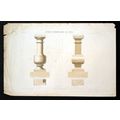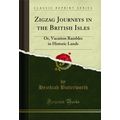Corfe Castle, Dorset - art postcard of seige of 1642/6
- Condition : Used
- Dispatch : 2 Days
- Brand : None
- ID# : 37966653
- Quantity : 1 item
- Views : 366
- Location : United Kingdom

- Seller : justthebook (+1703)
- Barcode : None
- Start : Wed 09 Feb 2011 20:11:11 (EDT)
- Close : Run Until Sold
- Remain : Run Until Sold
Checks/Cheques
 for 1 item(s) edit
for 1 item(s) edit
Shipping Calculator
More Listings from This Seller view all
Seller's Description
- Postcard
- Picture / Image: The Seige of Corfe Castle 1642-6 from an old print.
- Publisher: Judges of Hastings
- Postally used: no
- Stamp: n/a
- Postmark(s): n/a
- Sent to: n/a
- Notes & Key words:
------------------------------------------------
Postage & Packing:
UK (incl. IOM, CI & BFPO): 99p
Europe: £1.60
Rest of world (inc. USA etc): £2.75
No additional charges for more than one postcard. You can buy as many postcards from me as you like and you will just pay the fee above once. (If buying postcards with other things such as books, please contact or wait for invoice before paying).
Payment Methods:
UK - PayPal, Cheque (from UK bank) or postal order
Outside UK: PayPal or Google Checkout ONLY please. NO non-UK currency checks or money orders (sorry).
NOTE: All postcards are sent in brand new stiffened envelopes which I have bought for the task. These are specially made to protect postcards and you may be able to re-use them. In addition there are other costs to sending so the above charge is not just for the stamp!
----------------------------------------------
Text from the free encyclopedia WIKIPEDIA may appear below to give a little background information:
*************
Corfe Castle is a fortification in the English county of Dorset. It stands above the village of the same name. The castle dates back to the 11th century, and commands a gap in the Purbeck Hills on the route between Wareham and Swanage. The majority of the road traffic to and from the Swanage area passes below the battlements of the castle.
The oldest surviving structure on the castle site dates to the 11th century, although evidence exists of some form of stronghold predating the Norman Conquest. Edward the Martyr was assassinated at the site on 18 March 978.
Construction of a stone hall and inner bailey wall occurred in the 11th century and extensive construction of other towers, halls and walls occurred during the reigns of Henry I, John and Henry III. By the 13th century the castle was being used as a royal treasure storehouse and prison. Refortified in 1202–1204, the west bailey at Corfe Castle resembles the bailey of Château Gaillard, built by Richard the Lionheart in 1198.[1] In 1210, after she angered King John of England, Maud de Braose and her eldest son William were walled alive inside the castle dungeon, where they both starved to death.
In December 1460, during the Wars of the Roses Edmund Beaufort and his army marched from the castle destined for the Battle of Wakefield. During the march the army split at Exeter so the cavalry could reach the north quicker and on 16th December 1460 some of his men became embroiled in the Battle of Worksop,Nottinghamshire. Beaufort and the Lancastrians won the skirmish.
The castle remained a royal fortress until sold by Elizabeth I in the 16th century to her Lord Chancellor, Sir Christopher Hatton.
The castle was bought by Sir John Bankes, Attorney General to Charles I, in 1635. During the English Civil War, the castle twice came under siege by Parliamentarian forces. Sir John Bankes was away from his estate attending to Charles I so defence of the castle was led by his wife Lady Mary Bankes — "Brave Dame Mary" as she became known.
The first siege, in 1643, lasted for six weeks before the Parliamentarians withdrew with the loss of 100 men. The second siege, in 1646, was resisted for two months before the castle was betrayed by a member of the garrison. After its capture, the castle was slighted with some explosives and mainly by undermining to ensure that it could never stand again as a Royalist stronghold. In the centuries that followed, the local populace took advantage of this easy source of building material and masonry; door frames and other items originally from the castle can be seen in a number of nearby houses.
After the restoration of the monarchy in 1660, the Bankes family regained their properties. Rather than rebuild or replace the ruined castle they chose to build a new house at Kingston Lacy on their other Dorset estate near Wimborne Minster.
aaListing Information
| Listing Type | Gallery Listing |
| Listing ID# | 37966653 |
| Start Time | Wed 09 Feb 2011 20:11:11 (EDT) |
| Close Time | Run Until Sold |
| Starting Bid | Fixed Price (no bidding) |
| Item Condition | Used |
| Bids | 0 |
| Views | 366 |
| Dispatch Time | 2 Days |
| Quantity | 1 |
| Location | United Kingdom |
| Auto Extend | No |



















